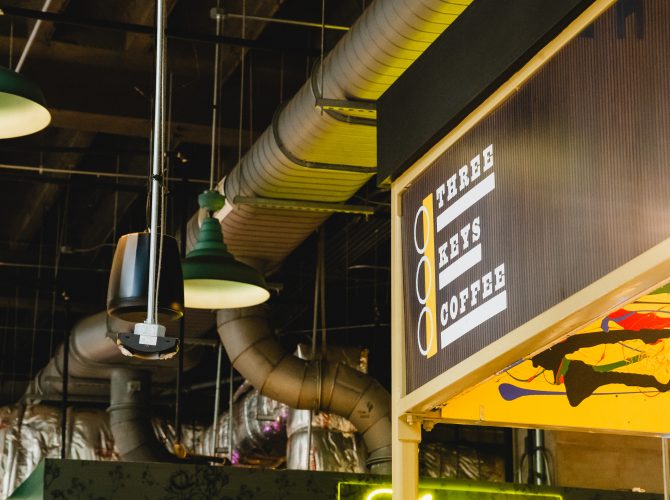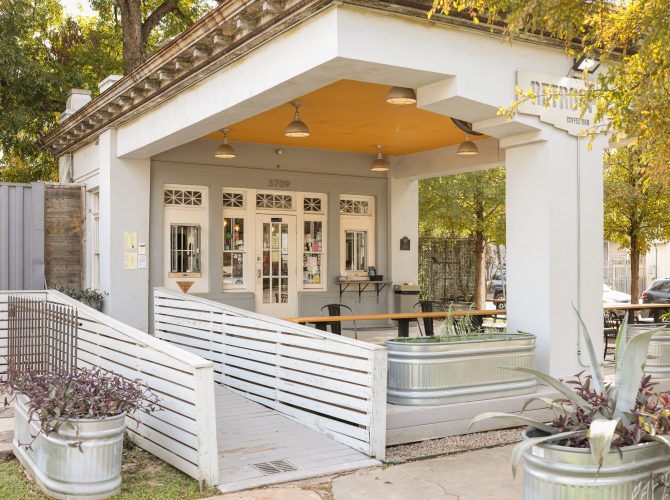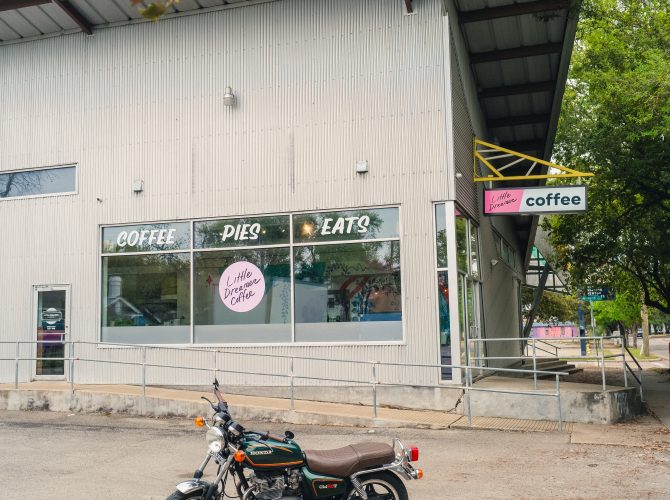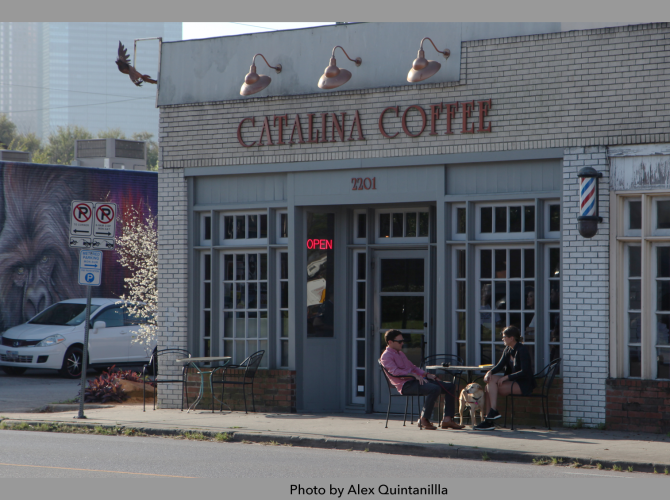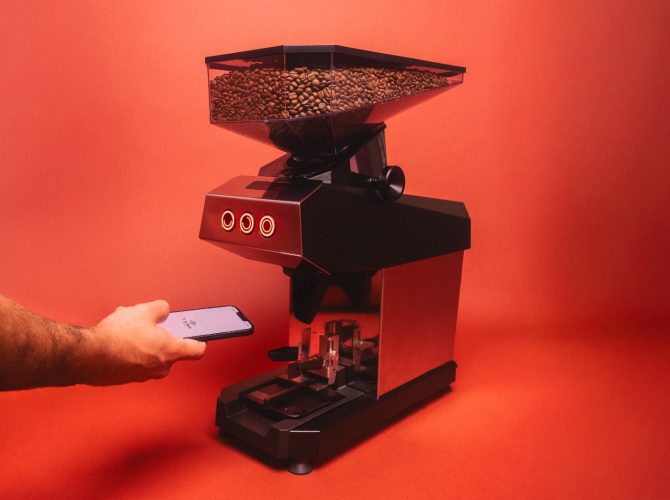This month, G&B Coffee is in residency at the La Marzocco café and showroom in Seattle. In advance of their residency, our team spent time with Kyle Glanville and Charles Babinski to document their unique approach to pursuing efficiency – with the ultimate goals of creating a great customer experience, but also great business practices.
We’ll be sharing G&B’s story in a three-part series of blog posts over the coming weeks.
This multi-part profile of G&B is the first of an occasional series exploring ideas, principles, and practices in specialty coffee that we’re calling the Accademia Series.
Introduction
If you go to G&B Coffee at Grand Central Market, the 99-year-old food hall in Downtown Los Angeles, on an early weekday morning — early morning being right before potential jurors report for duty at nearby courthouses, when the area traffic is, by Google Maps standards, dark red — you will notice a crowd. A crowd of accountants and fashion design students, of City Hall staffers and Los Angeles Times reporters, of construction workers and realtors, of novelists and East West Players theater actors, all clustered around the bar, getting coffee to go, getting coffee to stay. If you get your coffee to stay and just watch the ebb and flow of the crowd, you can’t help but notice that quite a cross-section of Los Angeles passes through here.
G&B Coffee owners Kyle Glanville and Charles Babinski very specifically set out to build a coffee shop that could handle a crowd. A big crowd. They envisioned a high-volume place, one that delivered not just high-quality coffee, but high-quality coffee quickly. They wanted to be realistic about how their customers want to experience their local coffee shop. “We want people to be able to walk up to the bar and get their coffee in 30 seconds. Immediately, essentially,” Charles says. “And we want that coffee to be as good as the coffee can be.”
To make the coffee as good as the coffee can be, the two zeroed in on setting their recipes. “We didn’t want to have an experience where the quality of the coffee depends on the barista,” Kyle says. “We wanted to have recipes that we could repeat, over and over again, within a very narrow window, no matter who is on bar.” The person who is on bar, meanwhile, is freed from the task of dialing in and instead can focus on other aspects of service.
Indeed, the major components of the bar — the grinders, the La Marzocco Linea PB espresso machine, the batch brewer and even the organization of the bar itself — are all fine-tuned in a way so that these recipes can be followed precisely, shot after shot, drink after drink. What can be done in advance is done in advance; machines are trusted to automate certain processes. But building this system has not been easy; it required, among other things, a complete reevaluation, and at times rejections, of many values that have been held so dear for so long within the specialty coffee industry. The result, though, is an ecosystem where regular customers find their regular drink order waiting for them by the time they’ve settled in at the bar. And that drink is as good as it can be.
In this series of posts, we’ll take a closer look at how these major components at G&B Coffee are set up to make the shop’s unique style of service possible. First up: their system for grinding coffee for espresso.
Grinding coffee for espresso
Generally, baristas (and home coffee drinkers) have been taught that coffee for espresso must be ground just before the shot is pulled, lest this precious cargo be degraded and staled by even the briefest exposure to oxygen. For a coffee shop, particularly for one that has decided quality and speed need not be mutually exclusive, that value represents a major break in bar flow.
“We were observing that espresso grinders were giving us very highly variable outputs in either direction,” Kyle says. That inconsistency, says Charles, means the barista has to spend time adjusting, and re-adjusting, the dose. Those extra steps add up. The bottleneck is not pretty.
Kyle and Charles were willing to absorb the speed bump, if it truly was the only way to preserve the quality of the espresso. But it occurred to them that it might be worth the effort to see what happens when the ground coffee sits out for a bit.
The seed of this idea actually goes back to Charles’s 2013 barista competition routine. As he prepared for the competition, he was, as competitors are, concerned about time. “I was trying to find a way to manipulate how the grinds fell into the portafilter and was using one of the HG-1 dosers,” Charles says. “I was showing this to a friend and fellow coffee professional, Ben Kaminsky, and remarking how it was taking up even more of my comp time. Ben suggested that I try grinding the coffee ahead of time, since he had observed that there wasn’t a real drop in quality.”
Charles took his friend’s advice and ground the coffee during his preparation time before his routine. (He did the same in the following year’s competition. Since then, though, the competition rules have been changed so that such pre-grinding is no longer permitted.)
The idea to pre-grind the coffee eventually made its way to the shop, and they began to test it. They ground some coffee. They let it sit for an hour. They pulled the shot, and put it up against one made with coffee that had been ground right before being set in the portafilter. Surprise: “We observed a difference, but not a degradation,” Kyle says. It was smoother and sweeter, even, with a fuller body.
They ran a few more experiments before ultimately concluding that they could pre-grind the coffee, up to a certain point, without a loss in quality. And that meant they could greatly speed up their bar flow by having a line of pre-ground coffee dosed out and ready to be popped into portafilters.
There were other advantages as well. Accuracy, for one: the shop doses to a tenth of a gram, which is as precise as their scales will go. If the grinder is over its target dose, the excess is dispensed into a side receptacle. When the grinder is under, grinds from that receptacle are used to make up the difference, which, at the end of the day, means less coffee waste.
When you see the pre-grinding and pre-dosing in practice, it looks quite a bit like cooks assembling their mises en place. Which is sort of the point: an efficient restaurant kitchen, after all, depends heavily on having the onions diced, the jalapenos seeded, the cilantro picked before service begins. Sitting at G&B Coffee’s back bar on a weekend morning, with the famed wonton soups from neighbor vendor China Café behind you, you’ll have perhaps the clearest view of how this sort of efficiency works in a coffee bar setting. There are three grinders there, a Mahlkonig Peak grinder for espressos and Americanos, and two Mazzers for espresso and milk drinks. Next to them, a tray of small shakers: three across, four down, twelve in total.
A barista will grind the coffee, adjusting the dose as necessary, then will drop those grinds into one of the twelve shakers on the tray. When each of the shakers on the tray is filled — three across, four down, twelve in total — the barista will pick up the tray, turn around and place it next to the espresso machine. The barista working the machine needs only to grab a shaker and funnel it into a portafilter.
Generally, the ground and dosed coffee is funneled into portafilters within 15 minutes of being set down. That said, they’re still exploring the concept. “We’re actually considering a minimum time of rest after grinding,” Kyle says, “Because there are some taste benefits and extraction benefits from oxygen exposure.”
After the grinds are funneled into the portafilter, all that’s left for the barista to do is to pull the shot. The barista pulls the shot, by the way, on a volumetric machine that is pushed to its limit most every weekend.
In our next post, we’ll examine how G&B gets the most out of their espresso machine.





